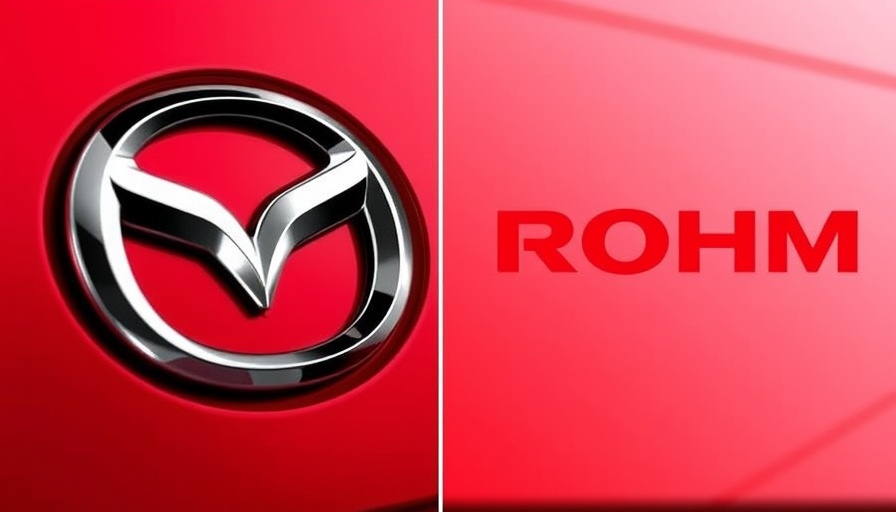
Innovative Semiconductor Development: The Shift Towards GaN
Japanese semiconductor manufacturer Rohm and the automotive giant Mazda are embarking on a collaborative journey to redefine the future of electric vehicles (EVs) through the development of next-generation semiconductors utilizing gallium nitride (GaN) technology. This partnership reflects a broader trend in the automotive industry, where the need for enhanced efficiency, reduced energy loss, and sustainable practices is becoming increasingly paramount.
From Silicon to Gallium Nitride: What’s the Big Deal?
The adoption of GaN power semiconductors marks a significant leap forward compared to traditional silicon (Si) counterparts. GaN components are celebrated for their superior electrical properties—including higher switching speeds and reduced energy losses—which are particularly beneficial in the realm of electric drives. As automotive manufacturers like Mazda work to electrify their fleets, adopting this advanced technology could lead to not only improved vehicle performance but also a reduction in the environmental footprint of manufacturing processes.
Driving Sustainability: A Commitment to a Greener Future
As the world demands more sustainable solutions, the transition to GaN semiconductors aligns economically and environmentally with global goals for carbon neutrality. “We are excited to work together to create a new value chain that directly connects semiconductor devices and cars,” stated Ichiro Hirose, Mazda's CTO, underscoring the profound implications of this collaboration for creating sustainable mobility. As both companies innovate through this partnership, they are effectively contributing to a more sustainable future, reinforcing their commitments to addressing climate change.
Challenges Ahead: Navigating Technical Hurdles
Despite the excitement surrounding GaN technology, the path to widespread adoption is laden with challenges. Transitioning from established silicon-based systems to GaN involves high development costs and intricate production procedures. The collaboration between Mazda and Rohm must confront these hurdles head on while delivering a production-ready solution by 2027, as planned. The ambiguity surrounding the scalability of the technology raises questions about its applicability across different vehicle segments.
A Market Seeking Efficiency: Understanding Consumer Needs
For Mazda, the challenge is not only technological but also revolves around ensuring that consumers perceive and experience tangible benefits from the new technology. They need to validate that GaN semiconductors will translate into enhanced vehicle performance, better energy efficiency, and ultimately improved cost-effectiveness for the end customer. Without this validation, there is a risk that GaN could be viewed merely as a marketing gimmick rather than a genuine breakthrough.
Looking Ahead: Predictions for the Future of Automotive Semiconductors
The collaboration between Mazda and Rohm exemplifies a growing trend within the automotive sector: the reliance on advanced technologies to enhance vehicle performance and sustainability. With a focused strategy targeting GaN development, industry analysts predict that electrification will advance rapidly, driven by ongoing investments in cutting-edge semiconductor technology. As Rohm previously partnered with TSMC to mass-produce GaN components, it is evident that the industry is poised for significant advancements.
Conclusion: Embracing Change in the EV Landscape
As the automotive world transforms around electrification and sustainability, the partnership between Mazda and Rohm is poised to foster substantial changes to vehicle performance and energy efficiency through GaN semiconductor innovation. For homeowners and businesses interested in the solar and green energy market, understanding these developments is crucial in navigating towards a more environmentally friendly transportation ecosystem. As stakeholders in clean energy, it’s time to embrace the future by staying informed on these trends and consider how they impact both individual actions and broader industry movements.
 Add Row
Add Row  Add
Add 




Write A Comment